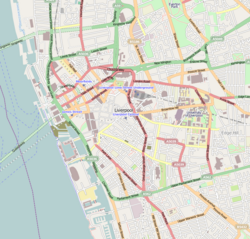| Royal Insurance Building, Queen Avenue | |
|---|---|
 Royal Insurance Building, Queen Avenue | |
| Location | 16–18 Queen Avenue, Liverpool, Merseyside, England |
| Coordinates | 53°24′24″N2°59′25″W / 53.40679°N 2.99018°W |
| Built | 1837-9 |
| Built for | Royal Insurance Company |
| Architect | Samuel Rowland |
Listed Building – Grade II* | |
| Designated | 14 March 1975 |
| Reference no. | 1365827 |
The Royal Insurance Building is a historic building located at Queen Avenue, Liverpool, Merseyside, England. [1] It was built as the head office of the Royal Insurance Company and was used until they moved to a building on New John Street in 1903. [2]




